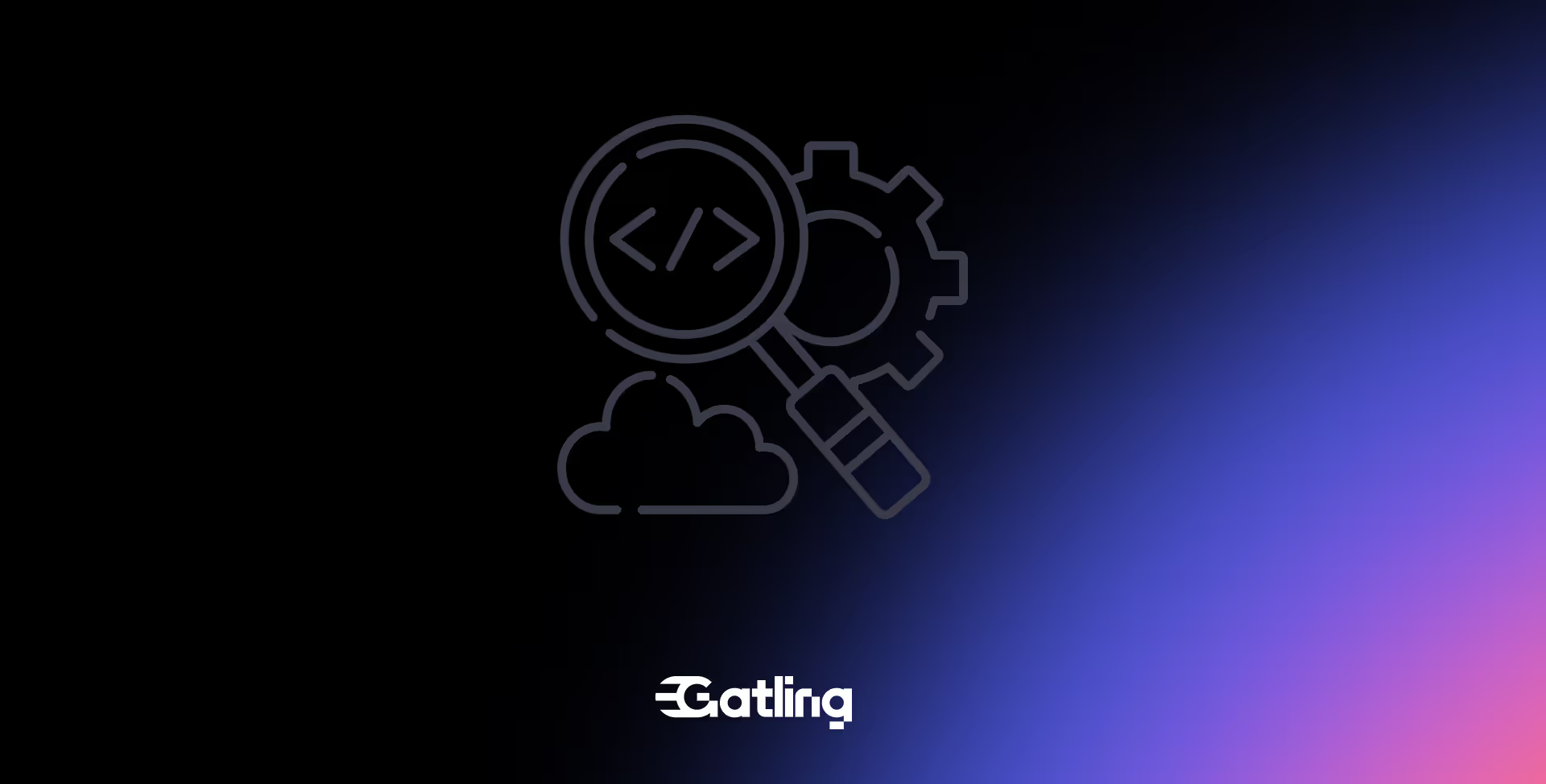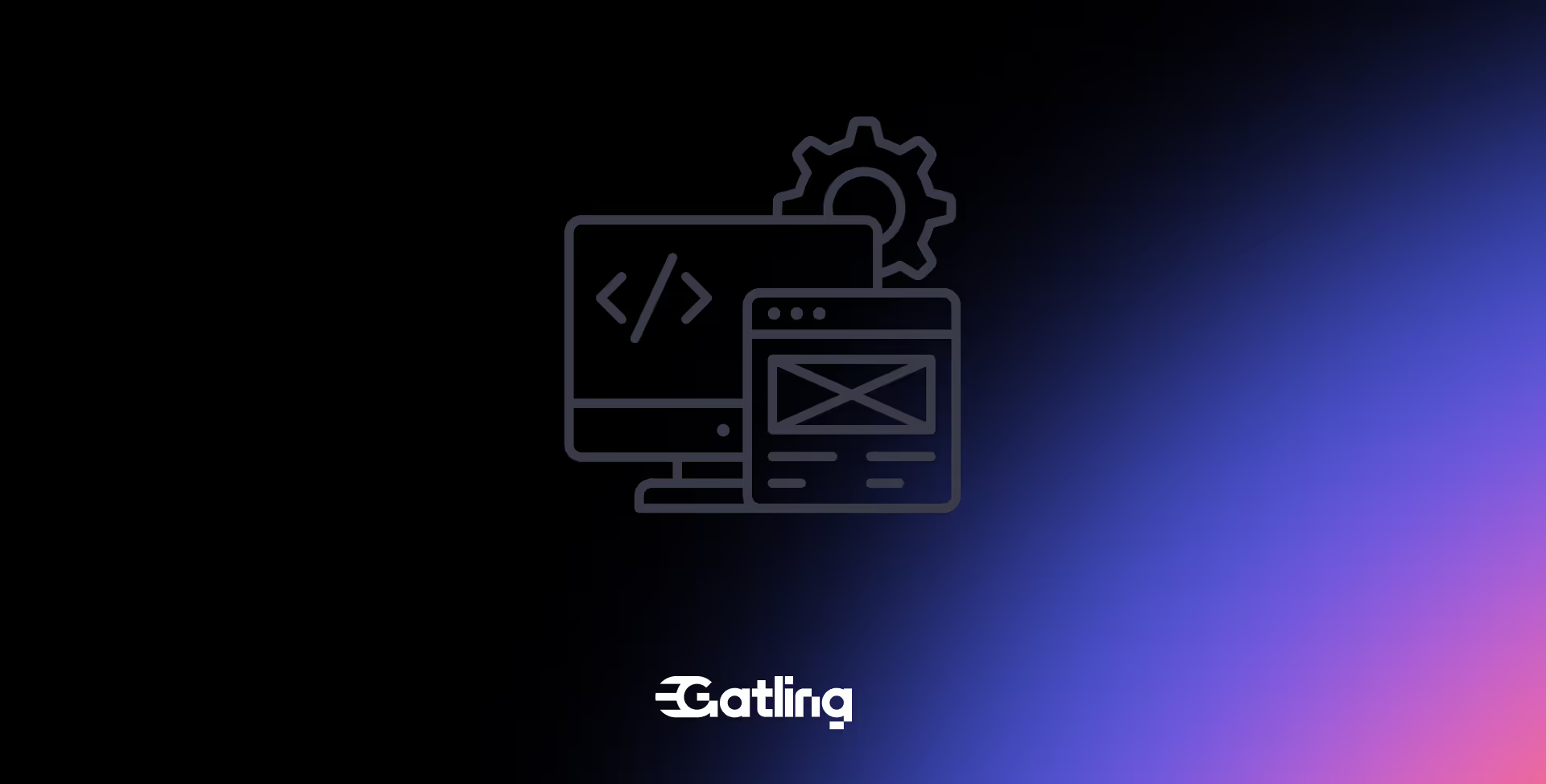Integrate performance testing into your CI/CD pipeline

Last updated on
Friday
November
2025
How to integrate performance testing into your CI/CD pipeline
Performance testing has long been the forgotten stage of software delivery — the final gate, often skipped when deadlines loom. But the truth is simple: when you delay performance testing, you delay certainty.
By embedding load testing directly into CI/CD pipelines, teams catch regressions earlier, deploy faster, and ship with confidence. At Gatling, we’ve seen this shift firsthand. Teams that once ran quarterly performance campaigns now test every merge. When performance becomes continuous, so does quality.
Why CI/CD needs load testing
CI/CD without load testing is like a car factory without a test track. Every release goes out assuming it’ll handle the road until traffic proves otherwise.
When performance testing joins the pipeline, engineering teams gain:
- Early visibility into bottlenecks before production
- Consistent baselines to detect regressions
- Confidence that every release can scale
Gatling Enterprise Edition makes this automation seamless by offering distributed load generation, cloud integration, and performance dashboards that fit natively into your delivery flow.
Where load tests fit in the pipeline
Performance testing in CI/CD isn’t one-size-fits-all. The key is aligning test depth with delivery speed.
Pre-deployment (staging)
Run core load tests before deploying to staging or pre-production. These simulations mirror production traffic and validate resilience without affecting real users.
Post-deployment (production checks)
Execute lightweight smoke tests after deployment to confirm that response times and error rates remain healthy.
Scheduled or nightly runs
Run stress, soak, and spike tests on a scheduled cadence (nightly or weekly). This pattern — seen in GitLab CI, Jenkins, and GitHub Actions — balances feedback speed with realism.
Pro Tip: Treat load testing like unit testing for scalability. Small tests on every build, full-scale tests on a predictable cadence.
Designing performance tests that work in CI/CD
The foundation of CI-integrated performance testing is test-as-code, and Gatling was built for it.
You can:
- Reuse test scripts across environments
- Store and version them with your source code
- Collaborate across teams using familiar CI workflows
Focus on what matters most
Start with the 20% of user flows that handle 80% of your traffic or revenue — login, checkout, search, or API calls. Gradually expand to microservices and integrated end-to-end flows.
Many Gatling users test microservices individually first using containerized runners and mocked dependencies, then run end-to-end load tests on staging once each service passes isolation checks. This approach keeps CI/CD performance testing fast, modular, and reliable.
Test data and environments
Seed your test environments with realistic data and reset them automatically before each run. Containerized test setups or ephemeral cloud environments are ideal for maintaining reproducibility.
Pro Tip: Reset your test data every run. Reproducible performance tests are impossible without consistent state.
Metrics that matter in CI/CD
To make load testing actionable, define measurable thresholds and turn them into build-time quality gates.
These numbers are your build’s performance contract. Define them as assertions in Gatling so the CI job fails automatically when SLAs are violated. Gatling’s pass/fail integration makes every commit accountable for performance.
Making CI/CD load testing fast and scalable
Load testing doesn’t have to slow down your pipeline. The key is running the right tests at the right time.
- Short, focused tests: Run quick 3–5 minute smoke tests per merge to catch regressions.
- Full-scale tests: Schedule heavier load or soak tests nightly or per release.
- Parallelization: Run performance tests in parallel with other jobs to keep builds fast.
- Smart targeting: Trigger only when backend code changes; skip for UI-only commits.
Pro Tip: A five-minute smoke test can save a five-hour outage.
With Gatling Enterprise Edition, distributed load generation is built in. Trigger runs from Jenkins, GitLab, or GitHub, scale across multiple injectors and regions, and analyze results in one central dashboard.
Turning results into continuous insight
The true value of continuous performance testing lies in visibility. Gatling results integrate directly with your observability stack.
- Dashboards: Stream metrics into Grafana or Datadog or view them in Gatling Enterprise dashboards.
- Alerts: Send Slack or email notifications on performance regressions.
- Reports: Store HTML reports as build artifacts for trend comparisons.
Teams using these practices turn CI results into an evolving dataset — tracking how every change affects speed and stability.
Pro Tip: Treat your performance dashboards like production monitoring — because they are.
Lessons from the field
Across industries, one trend is clear: teams that embed load testing into CI/CD improve both performance and collaboration.
We’ve seen Gatling Enterprise users — from retail to finance — cut mean time-to-resolution by up to 50% simply by catching regressions pre-deployment. Developers, testers, and ops all share the same dashboards and data, creating a single source of truth for performance.
Continuous performance testing in practice
When performance testing becomes part of the pipeline, the benefits compound:
- Fewer production incidents
- Faster, more confident releases
- Shared performance ownership across teams
This is where modern DevOps is heading — speed, safety, and scalability working together.
Ready to bring performance into your pipeline?
Continuous delivery without continuous performance testing is a risk.
With Gatling Enterprise Edition, you can automate your load tests, scale them in the cloud, and visualize results in real time.
Try Gatling Enterprise Edition and make performance part of every build.
FAQ
FAQ
Related articles
Ready to move beyond local tests?
Start building a performance strategy that scales with your business.
Need technical references and tutorials?
Minimal features, for local use only




